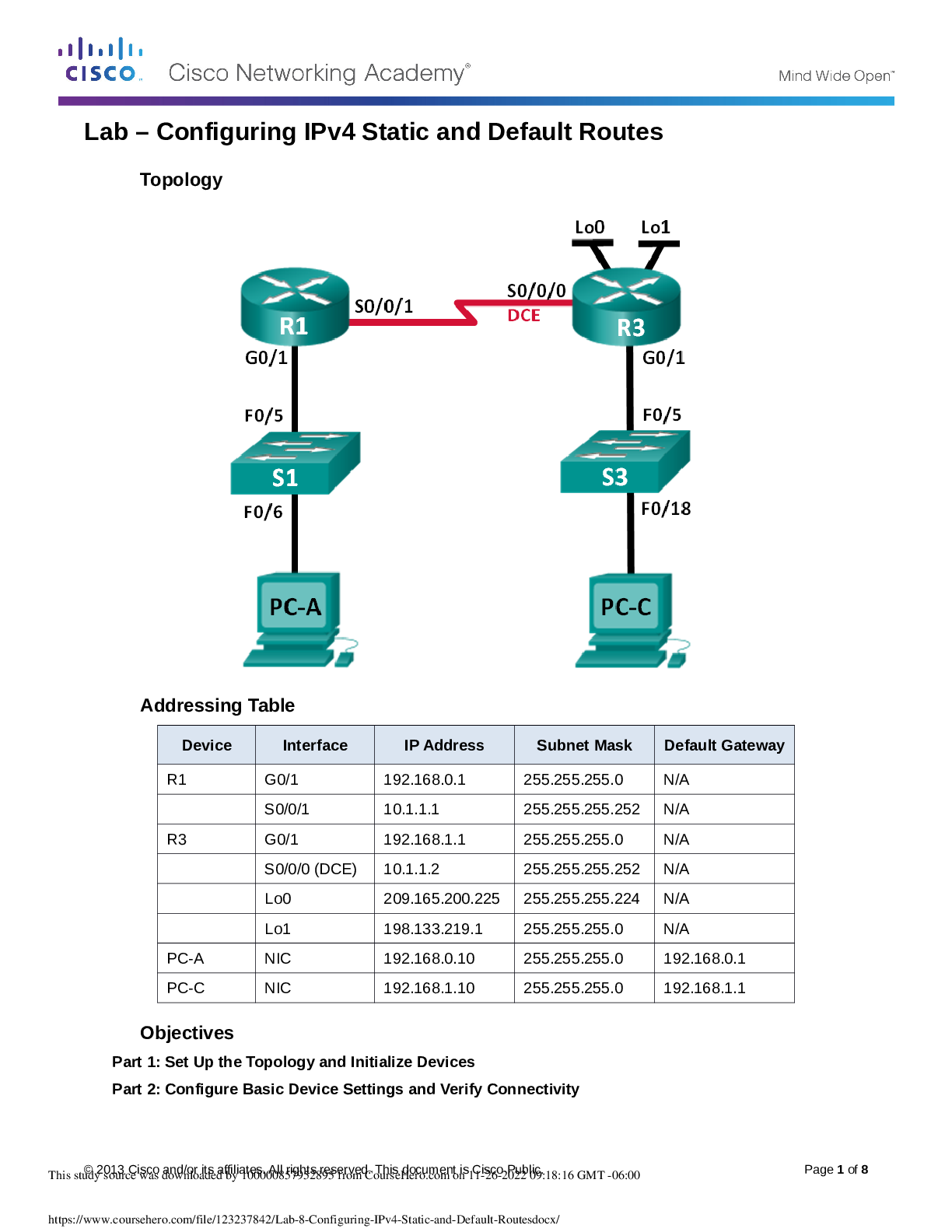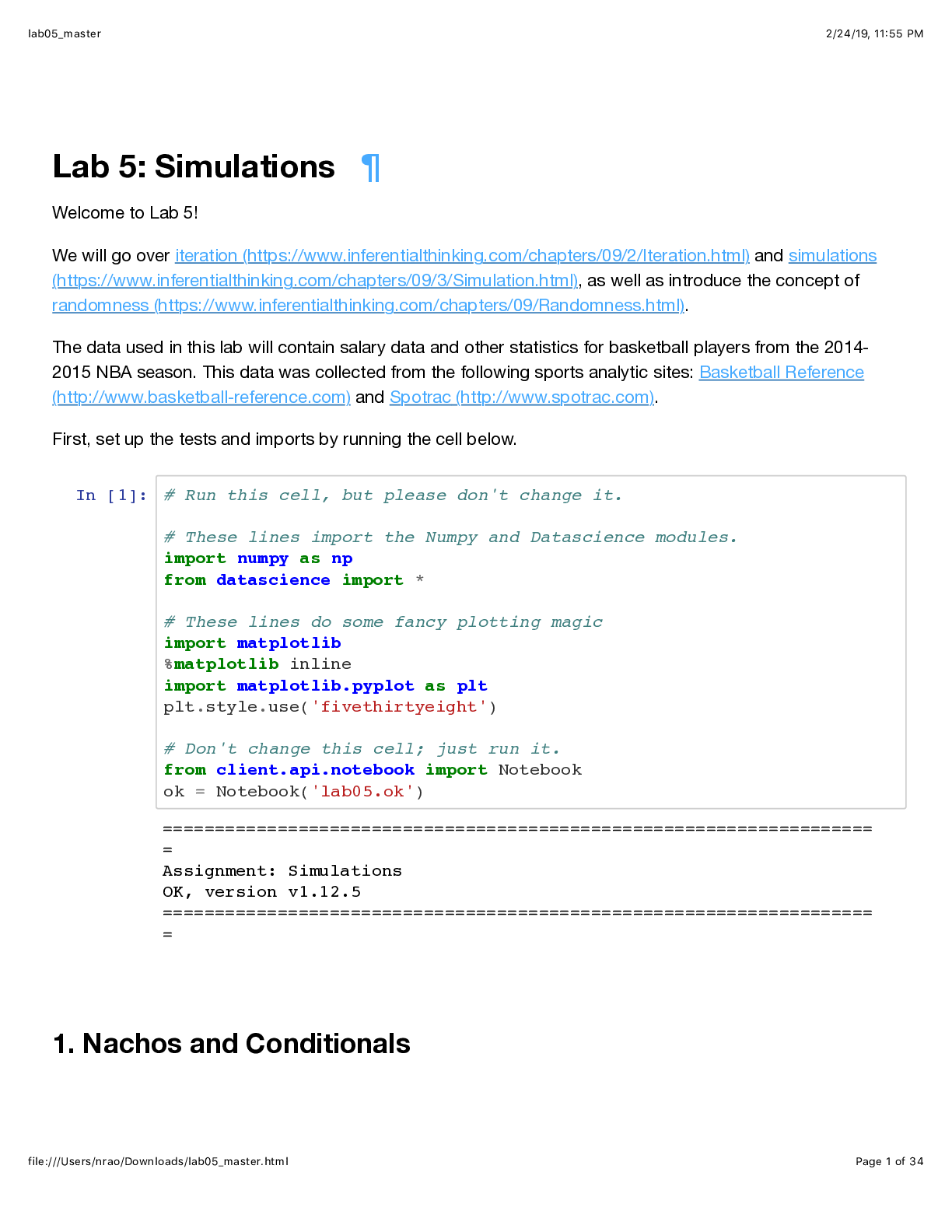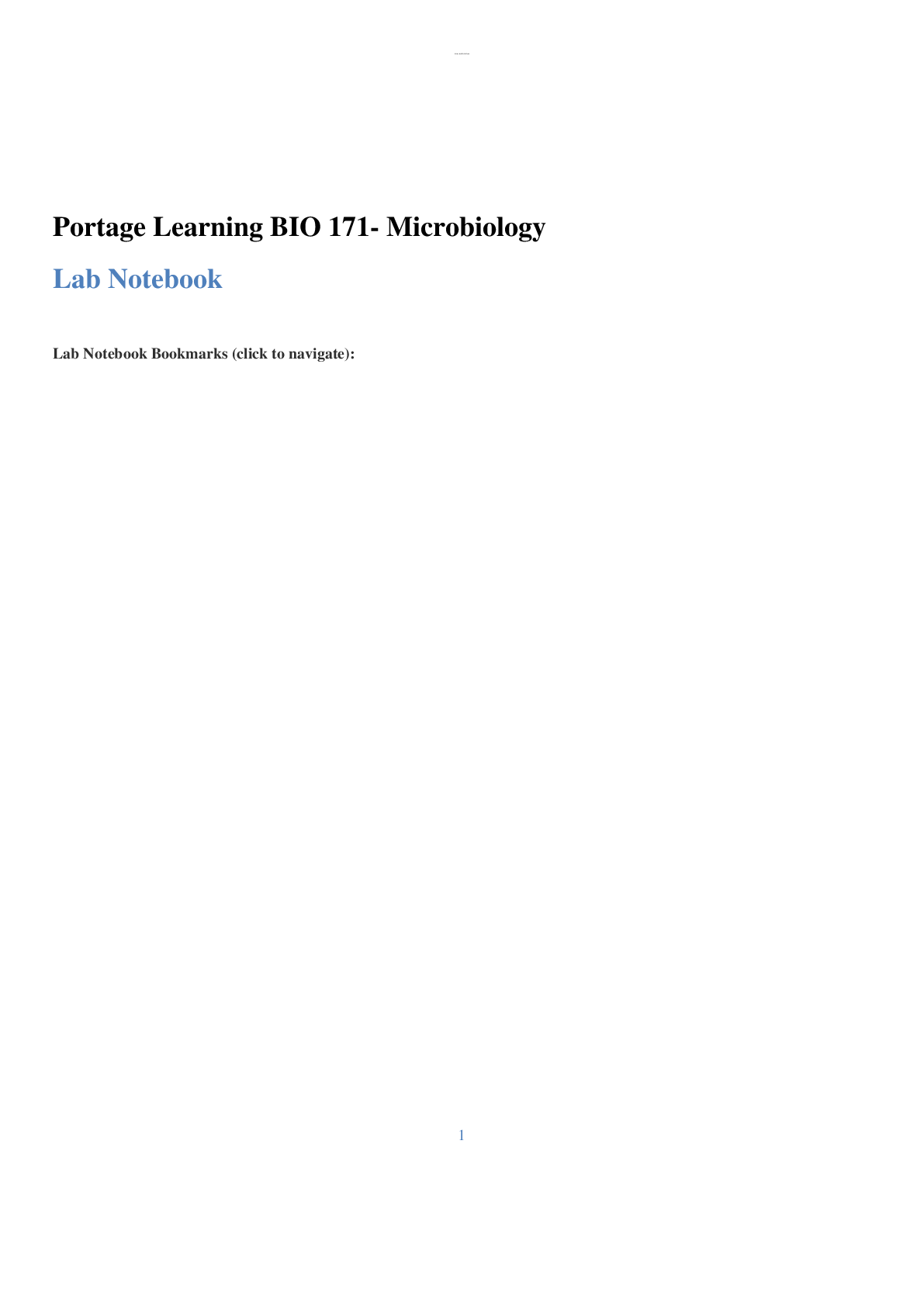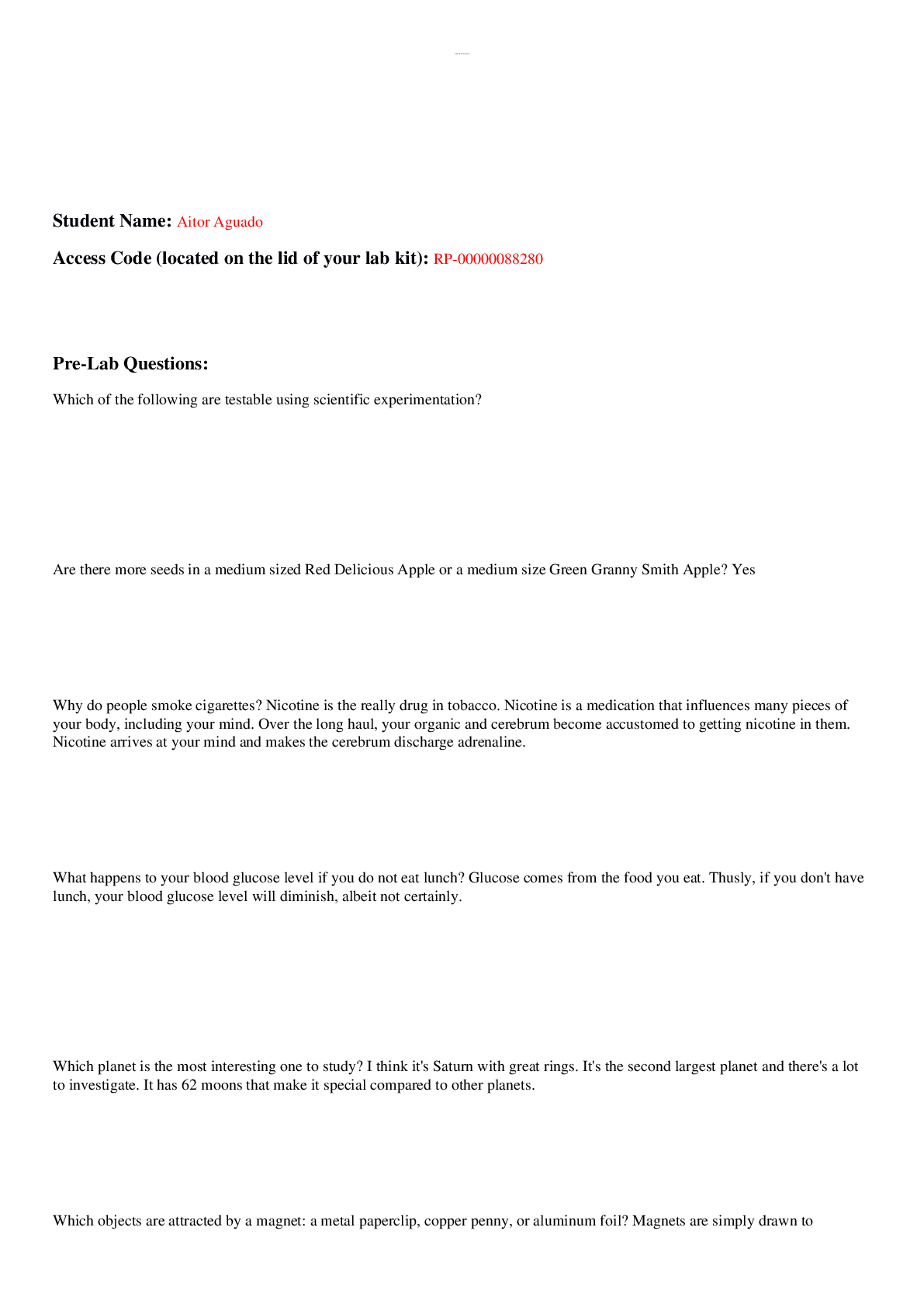Information Technology > Lab Experiment > Lab 8 - Configuring IPv4 Static and Default Routes. (All)
Lab 8 - Configuring IPv4 Static and Default Routes.
Document Content and Description Below
Lab – Configuring IPv4 Static and Default Routes Topology Addressing Table Device Interface IP Address Subnet Mask Default Gateway R1 G0/1 192.168.0.1 255.255.255.0 N/A S0/0/1 10.1.1.1 255.255. ... 255.252 N/A R3 G0/1 192.168.1.1 255.255.255.0 N/A S0/0/0 (DCE) 10.1.1.2 255.255.255.252 N/A Lo0 209.165.200.225 255.255.255.224 N/A Lo1 198.133.219.1 255.255.255.0 N/A PC-A NIC 192.168.0.10 255.255.255.0 192.168.0.1 PC-C NIC 192.168.1.10 255.255.255.0 192.168.1.1 Objectives Part 1: Set Up the Topology and Initialize Devices Part 2: Configure Basic Device Settings and Verify ConnectivityLab – Configuring IPv4 Static and Default Routes Part 3: Configure Static Routes Configure a recursive static route. Configure a directly connected static route. Configure and remove static routes. Part 4: Configure and Verify a Default Route Background / Scenario A router uses a routing table to determine where to send packets. The routing table contains a set of routes that describe which gateway or interface the router uses to reach a specified network. Initially, the routing table contains only directly connected networks. To communicate with distant networks, routes must be specified and added to the routing table. In this lab, you will manually configure a static route to a specified distant network based on a next-hop IP address or exit interface. You will also configure a static default route. A default route is a type of static route that specifies a gateway to use when the routing table does not contain a path for the destination network. Note: This lab provides minimal assistance with the actual commands necessary to configure static routing. However, the required commands are provided in Appendix A. Test your knowledge by trying to configure the devices without referring to the appendix. Note: The routers used with CCNA hands-on labs are Cisco 1941 Integrated Services Routers (ISRs) with Cisco IOS Release 15.2(4)M3 (universalk9 image). The switches used are Cisco Catalyst 2960s with Cisco IOS Release 15.0(2) (lanbasek9 image). Other routers, switches, and Cisco IOS versions can be used. Depending on the model and Cisco IOS version, the commands available and output produced might vary from what is shown in the labs [Show More]
Last updated: 3 years ago
Preview 1 out of 8 pages

Buy this document to get the full access instantly
Instant Download Access after purchase
Buy NowInstant download
We Accept:

Reviews( 0 )
$6.00
Can't find what you want? Try our AI powered Search
Document information
Connected school, study & course
About the document
Uploaded On
Nov 26, 2022
Number of pages
8
Written in
All
Additional information
This document has been written for:
Uploaded
Nov 26, 2022
Downloads
0
Views
180




















